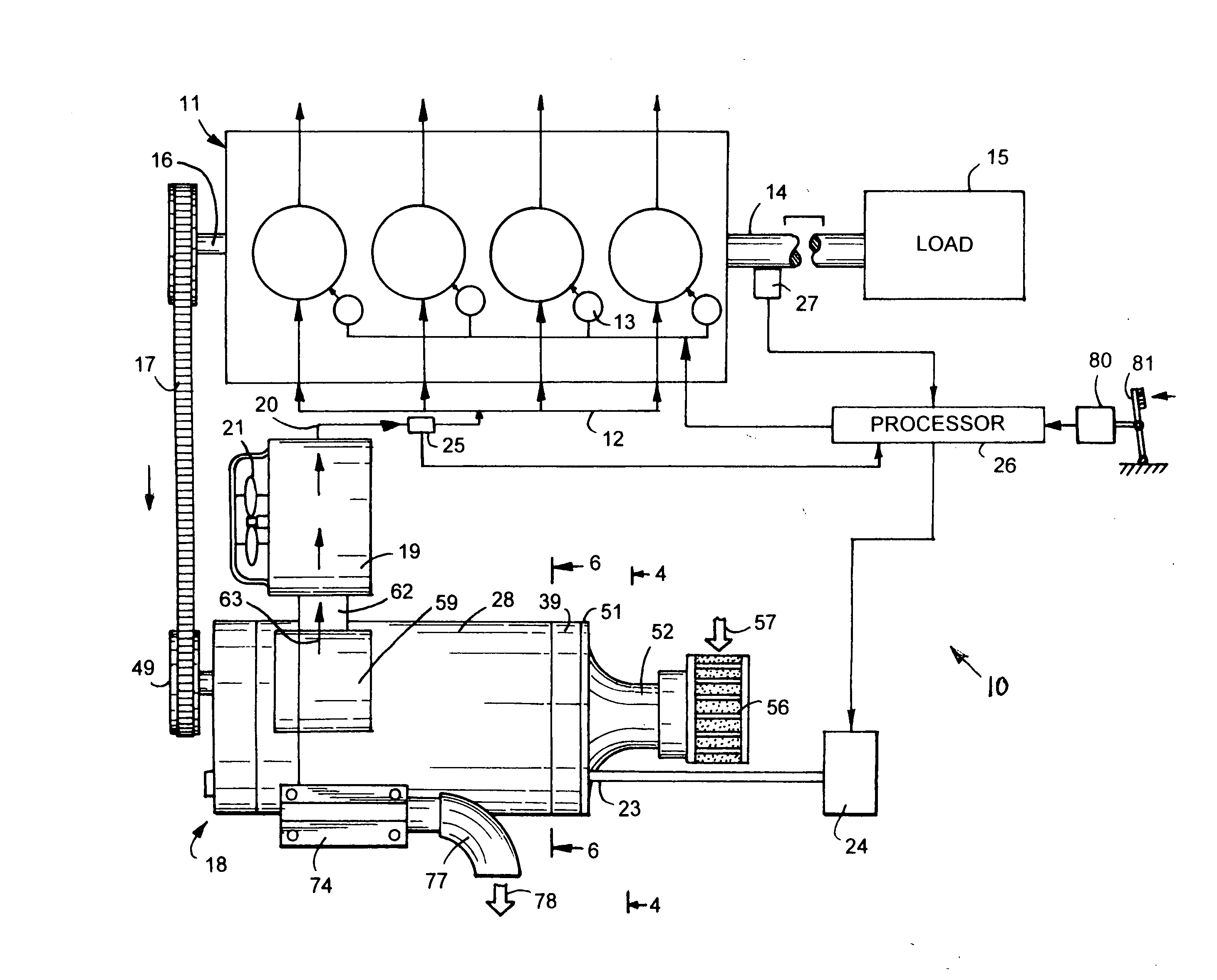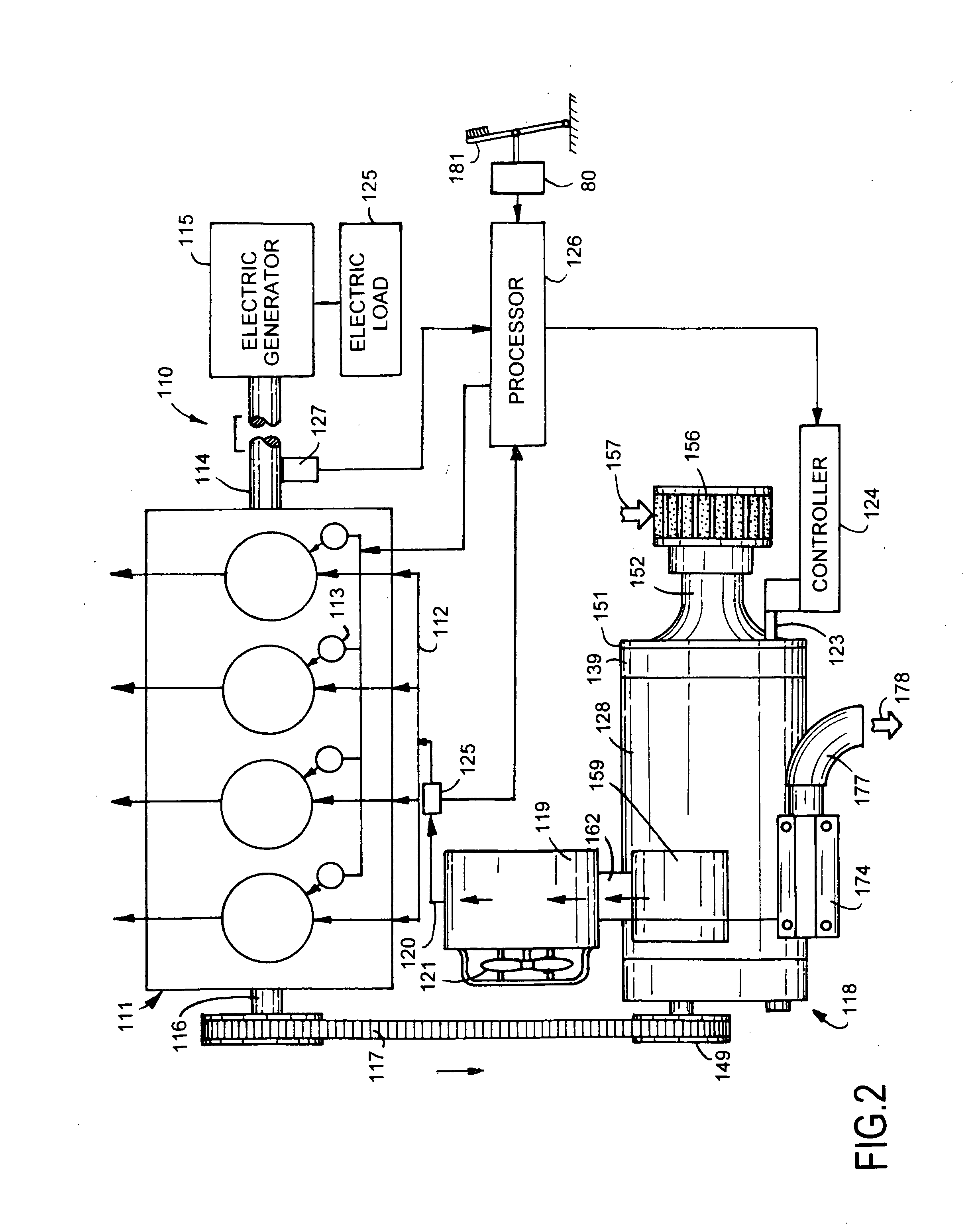Internal combustion engine and supercharger
a supercharger and internal combustion technology, applied in liquid fuel engines, machines/engines, electric control, etc., can solve the problems of internal cooling of the supercharger components and the lower air discharge temperature of compressed air delivered to the engine, so as to improve the power-to-weight ratio of the engine, increase the flow rate, and improve the effect of engine speed
- Summary
- Abstract
- Description
- Claims
- Application Information
AI Technical Summary
Benefits of technology
Problems solved by technology
Method used
Image
Examples
Embodiment Construction
[0035]The supercharged internal combustion power unit 10, shown in FIG. 1, is an internal combustion engine 11 having an air intake manifold 12 and a drive shaft 14 operably connected to a load 15. Engine 11 is an air compression ignition internal combustion engine, such as a conventional diesel internal combustion engine, with fuel injectors 13 operable to timely introduce fuel into the engine's combustion chambers. Engine 11 is an internal combustion engine typically using the heat of compressed air to initiate ignition to burn fuel injected into the engine's combustion chambers during the final stage of air compression. Engine 11 includes air compression spark assisted engines and engines that operate near or above atmospheric air pressure in the engine's air intake manifold. These engines are herein referred to as diesel-like engines. Load 15 can be a motor vehicle drive system, a pump, an electric generator or machines drivably coupled to drive shaft 14. A front drive shaft 16 ...
PUM
 Login to View More
Login to View More Abstract
Description
Claims
Application Information
 Login to View More
Login to View More - R&D
- Intellectual Property
- Life Sciences
- Materials
- Tech Scout
- Unparalleled Data Quality
- Higher Quality Content
- 60% Fewer Hallucinations
Browse by: Latest US Patents, China's latest patents, Technical Efficacy Thesaurus, Application Domain, Technology Topic, Popular Technical Reports.
© 2025 PatSnap. All rights reserved.Legal|Privacy policy|Modern Slavery Act Transparency Statement|Sitemap|About US| Contact US: help@patsnap.com



